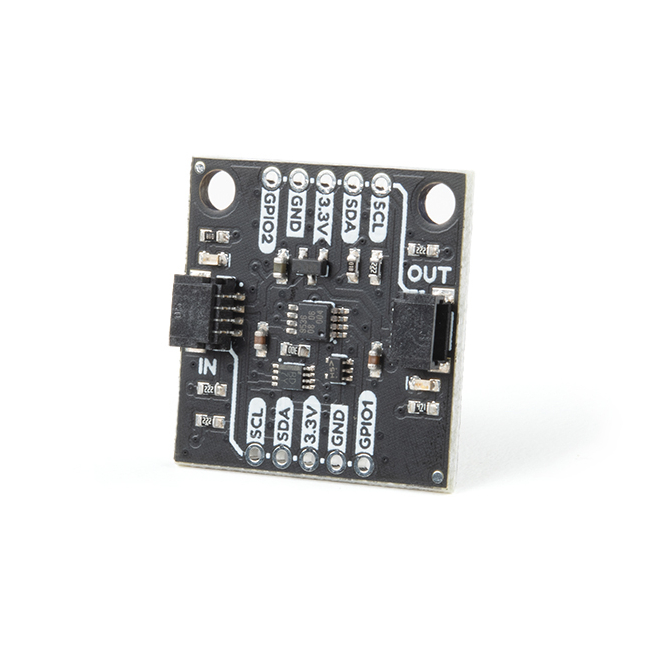Qwiic Power Switch
Many of our Qwiic products draw very little current when in standby, but there are some that draw considerably more. Products like our top-end u-blox GNSS boards in particular. There are times when you wish you could switch them off to save power, and the Qwiic Power Switch (QPS) allows you to do exactly that!
Based on the PCA9536 4-Bit I2C I/O expander, the QPS can completely disconnect any attached devices so you can minimize your current draw and extend your battery life when you need to.
The QPS also includes a PCA9306 level-translator which acts as a bus isolator. Want to mix 400kHz and 100kHz I2C devices on the same bus? The QPS will let you do that too! You can isolate the slower devices while you talk to the fast ones. You can leave the slower devices powered up while you do this, or completely switch them off. It’s your choice.
If that wasn’t enough, we’ve broken out the two unused GPIO pins so you can use those as extra inputs or outputs for your project too!
Our Arduino Library includes a comprehensive example showing how you can: switch the power; isolate the I2C bus; and use those extra GPIO pins.
Pair some QPSs with the SparkFun Qwiic Mux and you can now not only talk to multiple devices that share the same I2C address, you can selectively switch them off too!
Need extra Qwiic cables? This set covers all the options.
The SparkFun Qwiic connect system is an ecosystem of I2C sensors, actuators, shields and cables that make prototyping faster and less prone to error. All Qwiic-enabled boards use a common 1mm pitch, 4-pin JST connector. This reduces the amount of required PCB space, and polarized connections mean you can’t hook it up wrong.
Features:
- PCA9536
- 4-Bit I2C to Parallel Port Expander
- Operating Voltage (VCC): 2.3V to 5.5V
- (Note: Qwiic operation must be limited to 3.3V)
- Operating Temperature: -40°C to +85°C
- 400kHz Fast I2C Bus
- Input/Output Configuration Register
- Polarity Inversion Register
- Internal Power-On Reset
- No Glitch on Power Up
- Standby Current Consumption (Typical): 0.2μA
- I2C Address: 0x41
- PCA9306
- Dual Bidirectional I2C Bus Voltage-Level Translator
- Lockup-free Operation for Isolation
- IN and OUT Qwiic Connection Ports
- 2x Extra GPIO Pins
- IN and OUT Power LEDs
- Can be disabled for low power applications
Documents:
| Manufacturer | SparkFun |
|---|




